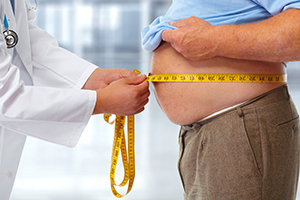January 2023 News Roundup
This month features favorable left main trends, predicting mental decline after PCI, the obesity paradox in TAVI, and more.

Every month, Section Editor L.A. McKeown curates a roundup of recent news tidbits from journals and medical meetings around the globe.
Substantial changes must be made to systems of care in the United States to reduce disparities in access to structural heart interventions, according to recommendations from a think-tank group published in JSCAI. Among their suggested changes are peer-to-peer training of referring clinicians and operators in underserved communities, and a request that industry sponsor that training.
An analysis of more than 14,000 cases of unprotected left main PCI performed in the United Kingdom between 2009 and 2017 shows that periprocedural MI, in-hospital major adverse cardiac or cerebrovascular events, and acute procedural complications have all trended downward over time. Published in Circulation: Cardiovascular Interventions, the data imply that “improved technologies and techniques combined with greater operator experience have improved patient outcomes.”
 Suspended radiation protection may decrease scatter exposure to an operator’s head and chest by more than 90% compared with wearable conventional shielding alone (lead apron and thyroid shield), a study of 229 cath lab procedures suggests. Operators who used scatter radiation absorbing drapes also saw a decrease in exposure, by about 66% compared with conventional shielding, investigators report in Clinical Research in Cardiology.
Suspended radiation protection may decrease scatter exposure to an operator’s head and chest by more than 90% compared with wearable conventional shielding alone (lead apron and thyroid shield), a study of 229 cath lab procedures suggests. Operators who used scatter radiation absorbing drapes also saw a decrease in exposure, by about 66% compared with conventional shielding, investigators report in Clinical Research in Cardiology.
Older age and frailty are risk factors for memory decline in the year after PCI or CABG, while overweight or obesity appear to be protective, according to data from a study of 1,390 patients published in the Journal of the American Heart Association. The authors generated a predictive model that they say can be useful for determining probability of memory decline, thus prompting preprocedural risk discussion and potentially introducing intra‐ and postoperative interventions aimed at optimizing cognitive outcomes.
 The impact of out-of-hospital cardiac arrest (OHCA) on the mental and emotional health of relatives who were present at the time it occurred has been largely overlooked, a study in the Journal of Cardiac Nursing suggests. The researchers found high rates of anxiety and ongoing concern, suggesting that the lived experience of the relatives should be acknowledged by healthcare professionals and incorporated into supportive care plans for OHCA survivors.
The impact of out-of-hospital cardiac arrest (OHCA) on the mental and emotional health of relatives who were present at the time it occurred has been largely overlooked, a study in the Journal of Cardiac Nursing suggests. The researchers found high rates of anxiety and ongoing concern, suggesting that the lived experience of the relatives should be acknowledged by healthcare professionals and incorporated into supportive care plans for OHCA survivors.
In a small study of patients with type 2 diabetes, giving empagliflozin (Jardiance; Boehringer Ingelheim/Eli Lilly) a month prior to elective PCI and then for the next 11 months conferred postprocedural cardiometabolic benefits. Writing in the Russian journal Kardiologiaa, researchers say that, compared with a group who did not have empagliflozin added to their hypoglycemic regimen, those who did had reduced total cholesterol, low-density lipoprotein, visceral and subcutaneous adipose tissue, fasting blood glucose, and HbA1c at 1 year.
With transcatheter bicaval valves (two self-expanding biological valves) emerging as an option in the treatment of tricuspid regurgitation, a report from Portugal describes the management of the first known case of device thrombosis. Writing in JACC: Case Reports, the researchers say their 80-year-old patient did well after receiving in-hospital parenteral anticoagulation followed by vitamin K antagonists at discharge to treat the 30 x 30 mm thrombus. By 2 months, there was “near resolution” of the mass on echocardiogram.
 Does the “obesity paradox”—a trend toward lower mortality in overweight or obese individuals—hold true in TAVI? That was the question researchers tried to answer in an analysis of 38 studies involving nearly 100,000 patients. As they report in Progress in Cardiovascular Diseases, the answer appears to be yes. Compared with those with normal body weights, obese patients had lower mortality at 30 days and 1 year, although they were at higher risk for acute kidney injury and permanent pacemaker implantation.
Does the “obesity paradox”—a trend toward lower mortality in overweight or obese individuals—hold true in TAVI? That was the question researchers tried to answer in an analysis of 38 studies involving nearly 100,000 patients. As they report in Progress in Cardiovascular Diseases, the answer appears to be yes. Compared with those with normal body weights, obese patients had lower mortality at 30 days and 1 year, although they were at higher risk for acute kidney injury and permanent pacemaker implantation.
Data from observational studies and RCTs indicate that despite longer fluoroscopy times, transradial PCI procedures done in the contemporary era (2014-2021) do not confer significantly greater radiation exposure to operators than transfemoral procedures, according to results published in Catheterization & Cardiovascular Interventions. Compared with similar data from 1995 to 2021, the contemporary analysis suggests a reassuring and ongoing decrease in procedural radiation use by transradial operators, the authors say.
L.A. McKeown is a Senior Medical Journalist for TCTMD, the Section Editor of CV Team Forum, and Senior Medical…
Read Full Bio


Comments